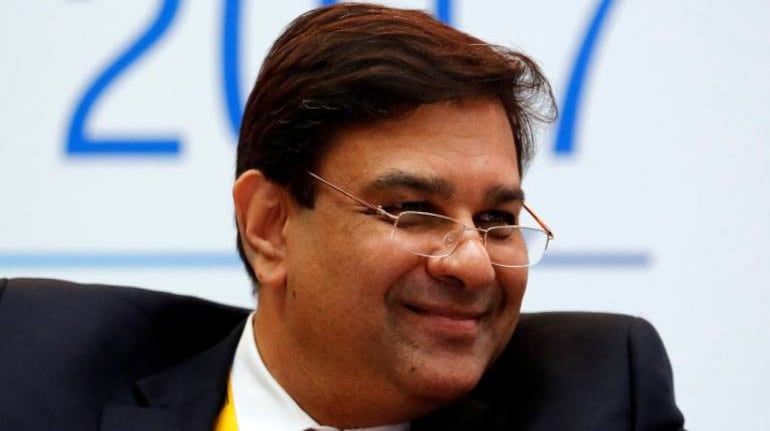



Madhuchanda Dey
Moneycontrol Research
There appears to be an unusual near-consensus that the RBI is going to cut rates by 25 basis points on Wednesday. Undoubtedly, softer prices — especially core inflation — and the progress of the monsoon lend temporary comfort on the price front. Growth appears to be a niggling worry, as borne out by recent industrial production, as well as core sector data. These factors make a rate cut a no-brainer. But if the revival of growth or kick-starting the capex cycle is the objective, a token 25 basis points rate cut (that is fully priced in) is unlikely to make any difference on the ground.
Where is the Transmission?
We wonder who will pick up the mandate of lending if a token rate cut were to happen. The growth in bank credit still hovers around 6.1%.
The RBI, in its last policy, had highlighted that transmission of lower policy rates wouldn’t happen as long as banks reel under asset quality problems and are too undercapitalised to start contributing to growth.
In the recently released Financial Stability Report, the RBI has said that “weak investment demand, partly emanating from the twin balance sheet problem (a leveraged corporate sector alongside a stressed banking sector) is a major challenge. Retrenchment of credit by public sector banks is partly offset by NBFCs, mutual funds and the capital market but they cannot fully substitute for banks in a bank-based financial system like ours. Hence, steps to restore the health of the banks assume urgency”.
A closer look at the financials of banks reveal an interesting trend.
Who are the Banks Lending to?
Most banks that are incrementally growing the books, are willing to lend largely to retail — for financing homes, cars and the likes. Incremental exposure to corporates is largely restricted to working capital and there the market has moved to MCLR (marginal cost of fund-based lending). Hence, CASA (current and savings accounts deposits), which was always important for banks, has now become king.
RBI Credit Policy: How Interest Rates Work
The recent 50 basis points reduction in SBI’s savings deposits rate stands testimony to the fact that the country’s largest lender doesn’t want to lose market share to large private sector entities and wants to stay competitive. SBI, with a sizeable CASA base of 45% of deposits, definitely stands to gain in this market after this move.

The risk aversion that is evident will require cleaning up the toxic books of banks and a token rate cut may not suffice.
Why a 50 bps Cut Makes Sense
The risk aversion has got aggravated by the fact that under the current guidelines, RBI requires banks to provide 50% provision whenever a stressed case is referred to NCLT (National Company Law Tribunal) and 100% if the asset goes for liquidation. The blended provision coverage ratio of the banking system is close to 40% with the provision coverage of most PSU banks much lower. Hence, the incremental provisioning requirement will be significant going forward.

A sharper rate cut could have sent a stronger signal about RBI’s dovishness and the resulting impact on the bond yield could have resulted in a handsome windfall for the banks (treasury income) that could have incrementally aided in complying with the provisioning norms.
Inflation — All Well So Far
On the price front, the picture looks more than comfortable. The latest CPI print of 1.5% has invoked a strong reaction from the government, almost to the point where it is berating the RBI for its inability to recognise how rosy things are. But this can’t be taken for granted.
While sowing has been good so far with higher acreage under rice, cotton, pulses and sugarcane, there is a fall in area under oilseeds. The recent rise in the prices of tomatoes and onions shows that such aberrations are increasingly turning into regular one-offs.
Although GST is unlikely to be inflationary, the regime so far had a smooth start and RBI may not like to react prematurely with a rate action without ascertaining its impact on growth.
Loan Waiver — More Contagious than Apprehended
Another area recently flagged by the central bank was the spate of farm loan waivers. The recent communication from a best-in-class private sector bank suggests that far from being insulated, every bank in the country is now impacted by the “moral hazard” in the farm loan portfolio, an area they cannot avoid under priority sector lending.
Last but not least, on the global front, growth appears to be making a comeback in the developed world and central banks look set for unwinding an accommodative policy stance. The impact of the same on commodity prices flows to emerging markets and currency would also deserve RBI’s attention. In recent times, we have seen a steady upwards trajectory in copper as well as crude.
Against this backdrop, a more meaningful action from the Central Bank is warranted — one that genuinely shows RBI’s intent in doing its bit to revive growth. It has to be a decisive commitment or no action — a middle path rarely helps.
Discover the latest Business News, Sensex, and Nifty updates. Obtain Personal Finance insights, tax queries, and expert opinions on Moneycontrol or download the Moneycontrol App to stay updated!
Find the best of Al News in one place, specially curated for you every weekend.
Stay on top of the latest tech trends and biggest startup news.